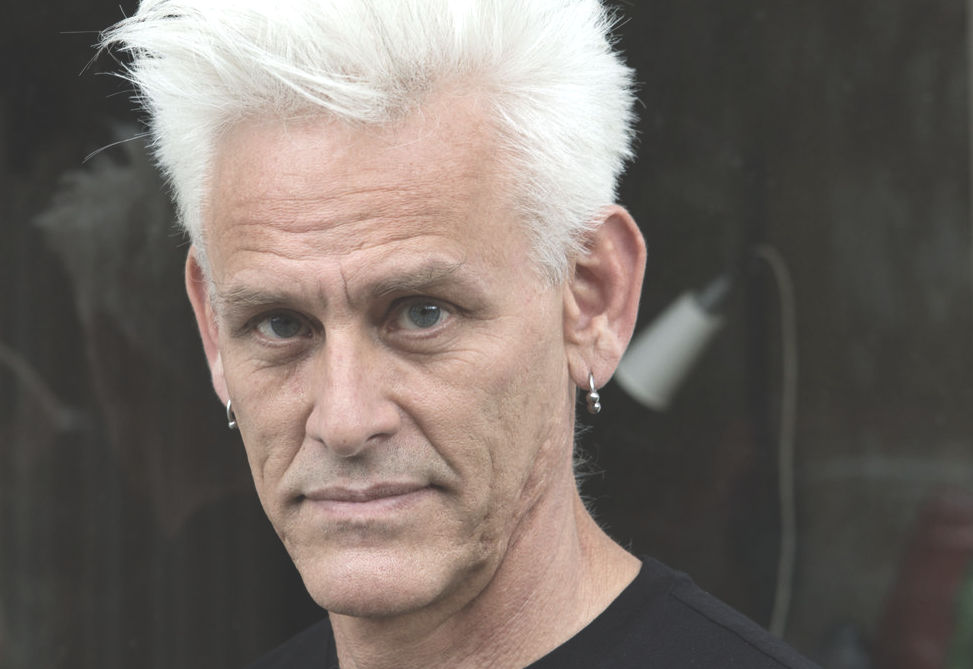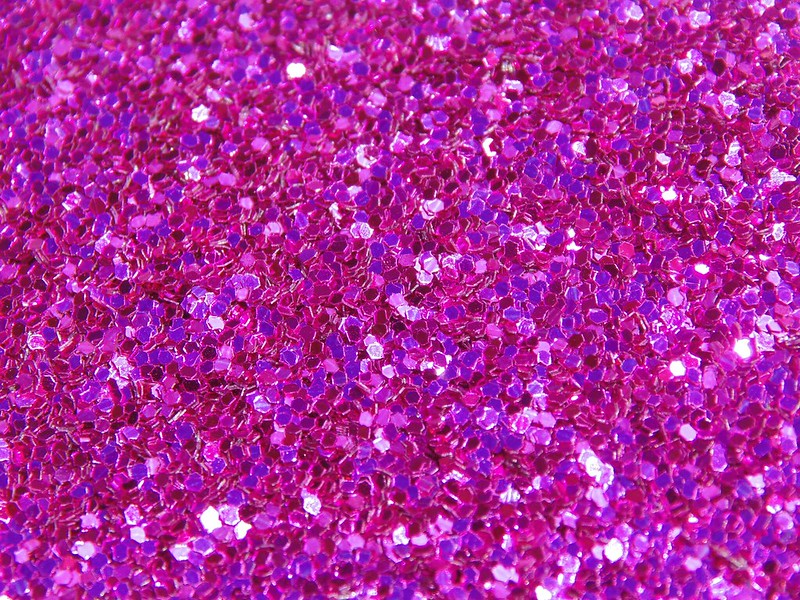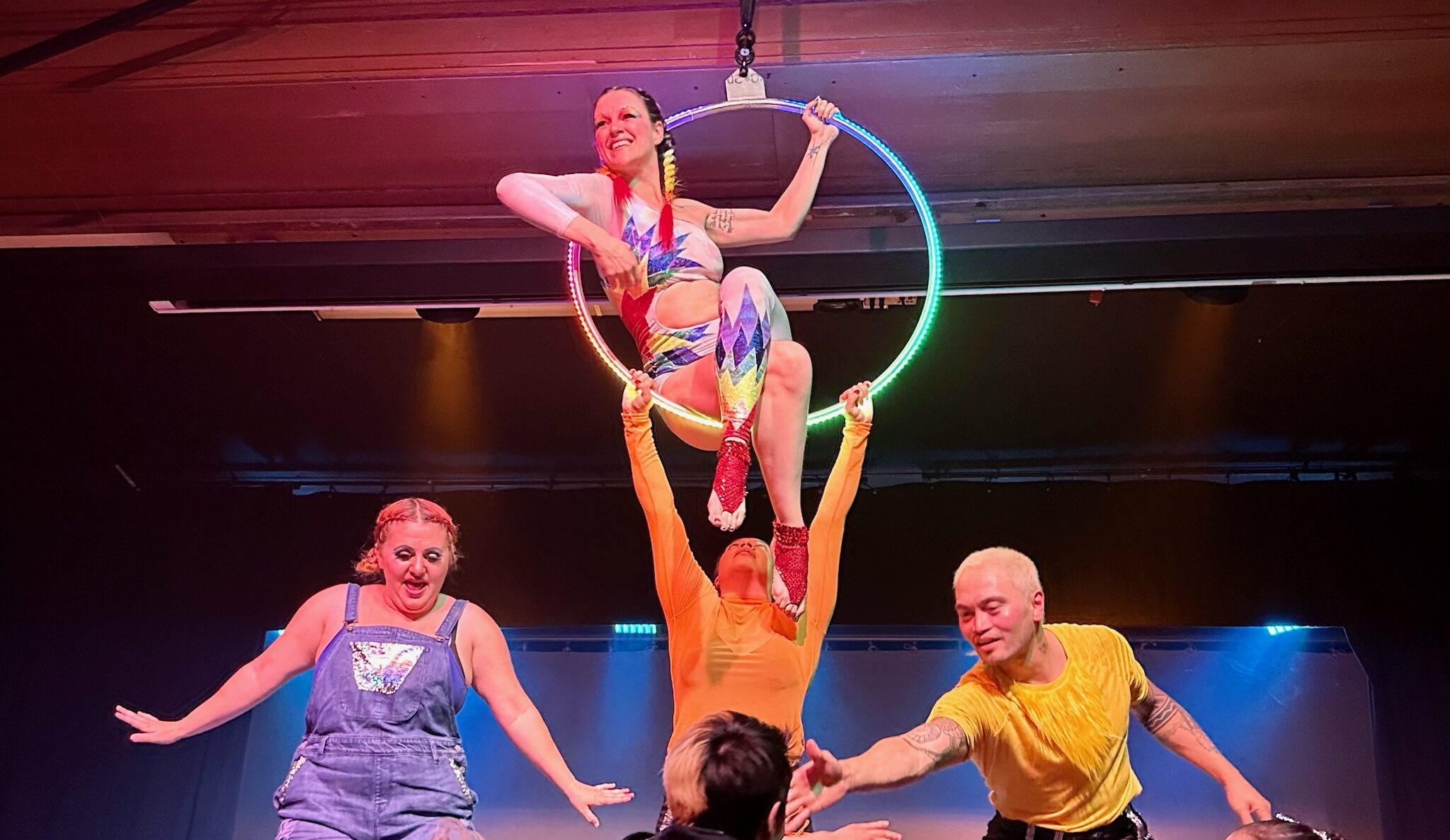I’ve always been a fan of Robbie Sweeny. For years I’ve admired his photographer choreography, his hurried movement and cadence during performances. It takes considerable method and skill to shoot the perfect angle, and to capture the compelling photos that highlight CountrePulse’s Instagram feed. My colleagues and I admire his stylistic editing; together we scroll Flickr as a pastime. It’proves difficult to select a photo for a project—they’re all so striking.
Although Robbie works behind the scenes, the dance community shares a deep appreciation for his craft. His warm presence reverberates throughout our lobby and house at shows. He knows most faces in the house yet his focus is behind the camera. Soon after the show, artists swap their Facebook profile pics for that fresh Robbie shot.
I found myself curious about the man behind the lens. What’s the thought process behind his work and how does he approach the camera? What’s the movement score and work ethic of a performance photographer, and how do artistic motifs inform the editing?
I had the pleasure of speaking with Robbie who shared a little bit of his craft with me.
Justin Ebrahemi: How did you get involved with performance and dance photography?
Robbie Sweeny: I first started shooting performances in London in 2007. I was doing my BA in Photography at London’s South Bank University. Initially my focus was on architecture and landscape, but then I started going out to these chaotic underground performances and raves on the weekends. These performances were incredibly interactive,visceral; I began photographing them and the wildness of the attendees. These early days laid the foundation for my approach to photography. I was able to get right into the middle of the movement, follow it, and in some ways be a part of it for a brief moment.
JE: What were those performances like in London? And how did you eventually get introduced to CounterPulse?
RS: These kinds of DIY, spontaneous performances allowed for a level of physical access and interaction that really complimented my style. Over my time of living and studying in London, this became a lot more exciting to me. Once I completed my BA in London, an opportunity to move to SF for a year came about. In the Bay, I dove into a community of artists and especially performance artists and dancers. I started taking photos at various events and found that the chaotic, at times abstract, style I had picked up in London seemed to resonate with artists here. My first time working with CounterPulse was the first dress rehearsal for Keith Hennessey’s stunning epic ensemble piece Turbulence back in 2010. it was my first time experiencing contact improv—it was love at first sight—I found it to be in some ways related to the performance I was shooting in London, but with more intention and care.

Keith Hennessy / Circle Zero in “Turbulence” (2010)
JE: “Love at first sight” is a strong sentiment, and it seems you mirror that same intention and care in your work. What does it mean to shoot with CounterPulse? It’s obviously more than a gig, I’ve noticed your close relations with the artists and us as staff. What’s this been like for you?
RS: CounterPulse to me is so much more than just an performing arts organization I support. It is really in many ways the ground zero for collaborations from Keith Hennessy and Lenora Lee to Mica Sigourney and FACT/SF—between performance and the image that have spanned almost a decade now. CounterPulse is a home for my art work, too. I feel the artists and staff are family. When I lost my photography studio in the mission last year, CounterPulse came to rescue and have offered me the use of its beautiful rehearsal studio as a popup photography studio. CounterPulse to me means freedom. Freedom to experiment. Freedom to try something new. You just never really know what you are gonna get from a performance here; from queer avant garde work to experiments in emerging technologies to witnessing rich, culturally-diverse performance.

Monique Jenkinson aka Fauxnique & Mica Sigourney aka VivvyAnne ForeverMORE! in “Quent” (2019)
JE: Yeah, CounterPulse has such an extensive array of diverse programming. It’s almost surreal. How do you approach our dynamic shows as a photographer? Is there a way you adapt your practice?
RS: I think, as a performance photographer, the way you adapt to shooting the work is to be prepared for constant change. There’s no time to control or make changes to the environment in the ways a photographer would in any other setting. I also have learned to follow and anticipate the flow of the dance, to bring my camera to a space within the more intimate moments, to capture that which is sometimes missed, to join the movement scores, and reflect those feelings and reactions into the images. I try to match my interpretation of the image with the way the dancer interprets the movement.
JE: Do you ever feel like you’re part of the performance itself? The way you’re describing tracking the movement score and reflecting it back with your craft, it’s like you’re working with the artists as another dancer.
RS: Yes, exactly. Perhaps my favorite artist is Sara Shelton Mann. She has influenced me and my work (and countless others) more than anyone else. Early on in our work together, whilst shooting the dress rehearsals, she realized that she enjoyed watching me move with the dancers, so she encouraged me to become a part of the performance by shooting the show live and interacting with the piece.

Sara Shelton Mann in “Vortex/Raine”
It is a really interesting way to shoot. It takes effort to forget about the audience, but once I do I’m liberated to follow the motion and find the shot. The image of performance art should be within the movement, not standing outside it. I feel the images with Sara are stronger as I can really go in where I need to be to follow the movement and get lost in it. I do worry sometimes that some folks are watching and thinking “that photographer is nuts! Would he ever get out of the way!”
JE: Sometimes you need to get in the way to get the right shot! You also do some portrait work. How do you approach this differently from your performance photography?
RS: Performance is chaos, you don’t really have time to think, it’s very reflexive. Sometimes I don’t even really remember a performance if I’ve shot it. In contrast, portraits are all about control, formalism, and slowly setting everything up so as the lighting and the body and the face are exactly how and where they need to be. But there are times when these approaches enmesh, especially when creating portraits with performance artists, I try to combine the two styles. I try to bring movement into the portrait.

Rachael Dichter & Dia Dear in WITH, upcoming in Edge Residency 2020
JE: That combined approach makes sense, especially capturing dancers’ facial expressions during a performance…After working with CounterPulse for a decade, do you have a favorite performance that you’ve shot?
RS: So with shooting at CounterPulse for nearly 10 years now, it would be impossible to pick just one! So many works immediately jump to mind! I gravitate towards works with a strong visual aesthetic—a clarified point of view through the color and composition of the piece. One the first pieces that just blew me away, and cemented my desire to stay in the Bay Area, was Larry Arrington and Jesse Hewit’s ADULT in 2013.
It celebrated the tumult that exists with both living and dying and it visually blew me the fuck away. Unending shocking pink, contrasted with blue and yellows and those two moved like they were possessed by saints and demons. But in the movement, when you were able to catch their faces and emotions, it kinda told its own story, like a b side to it all.

Jesse Hewit & Larry Arrington in “Adult : JARRY” (2013)
Work More 8: Drag House was epic in the true use of the word. The piece had 27 drag performers on three different stages. It perfectly captured the history, lineage, genres, medias and tapestry of drag in San Francisco today. Every once in a while, you see a performance where you think to yourself, ‘ok, that broke the mold on what can be done’, and this was one of those nights.
Performing Diaspora is always something I look forward to shooting, but it was especially strong in 2019. I was so moved and inspired by mouth/full by Gabriel Christian & Chibueze Crouch. The piece explored faith, sexuality, spirituality and religious institutions through the experiences of two artists from the African diaspora.
Both of these artists know how to uplift and challenge.

Gabriel Christian & Chibueze Crouch in “mouth//full” CounterPulse Performing Diaspora 2019
JE: I agree, both those works were beautiful and courageous and unlike anything I’ve experienced before. And yet again, these performances are all so distinct in their theme, their tone, their choreography, their look. And this uniqueness manifests in your editing style. There’s like this Robbie Sweeny look in how you brilliantly enhance, or perhaps distort, some of your photos. Some are black&white, some are grainy, some are crisp and vivid. How do you make these artistic choices?
RS: I spend a lot of time editing photos. I go through each image and sit with it and play with it. I follow intuition, letting my relationship to the movement and the performer guide me. There are also learned elements too, lots of “rule of thirds” and experimenting, but then there are also choices that are forced, sometimes there are lighting or staging choices that look incredible on the night, but those decisions sometimes do not translate to a strong photograph. I have to find the approach to editing those images that will try and capture the reality and essence of the show whilst at the same time creating the strongest images possible.
Take, for instance, if the lighting in a show is used to make everything go a monochromatic red, pink, blue or yellow. This treatment washes all the texture and depth out of a photo. It can be really hard to edit, but you have to figure out, through trial and error, how to save those images.

Dohee Lee’ in “ARA Ritual I: Waterways” (2016)
I think part of my style is having a variety of aesthetics to keep mixing things up. I had a teacher once tell me that you had to choose both a style and ratio and stick to it, but I battled with that a lot in University. I think I found a community and style in which the mix and unpredictableness complements the work.
All photos by Robbie Sweeny. Visit his website at www.robbiesweenyphotography.com. Justin Ebrahemi is the Communications Director at CounterPulse
Share This!
More Good Stuff
Dearest Community Members, We’re looking forward to coming together in an evening of community connection tomorrow at INNERSPACE. The value of this opportunity to take
CounterPulse TenderArts Program announces The Glitter Show, paying homage to the role glitter has played as an important visual element in the history of gay
by Genie Cartier, director of Dark Side of the Circus Although we only had a few months to rehearse it, this show took 17




